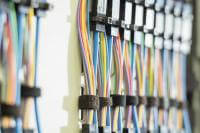
Is it time to upgrade to ultrafast broadband?
Posted by Andy Betts on in FeaturesTrueSpeedSkyEEVirgin MediaVodafoneCommunity FibreGigaclear
With the upgrade to our broadband infrastructure being accelerated, ultrafast broadband is becoming more accessible with each passing day.
So you might now be wondering, is it time to upgrade to a faster deal? But what exactly do you get, and what are the benefits to ultrafast broadband? Let's take a look.
What is ultrafast broadband?
Anything with a download speed over 100Mb can be classified as ultrafast.
There are a lot of different technologies that are able to deliver these faster speeds, including upgraded street cabinets that use the G.fast technology, Virgin Media's cable and fibre network, and the growing number of full fibre, or fibre-to-the-home, services that are being rolled out across the country.
Coverage is still quite patchy, but a majority of UK homes can get an ultrafast service from at least one provider, with as many as 59% able to get speeds of at least 300Mb.
Do you need ultrafast broadband?
While faster is very much better, the normal fibre broadband connections that most of us still use are extremely capable.
A 67Mb connection is good enough to allow you watch Netflix or Amazon Prime in 4K, and can download a 1GB file in just a touch over two minutes. You shouldn't experience too much in the way of problems, even with a fairly busy household.
But remember, your available bandwidth is divided between all the devices connected to your network. The more devices you add, the more likely you are to experience slowdowns on some of your tasks - your videos drop to a lower resolution, your downloads take longer, and so on. Ultrafast broadband reduces the chances of this happening, and the faster your connection, the less likely it gets. It allows you to connect more devices, and more people, without putting any limits on what they can do.
So while you might not have a desperate need for ultrafast, right now, there are lots of good reasons why it will benefit you.
- Your browsing in general will speed up. You'll notice it especially with complex web apps like Google Docs, or photo heavy sites. You get a shorter ping rate, too, which means better online gaming.
- You will experience much faster downloads. This isn't just files you're actively downloading on your laptop, but other things like those Windows 10 updates that happen in the background, video game downloads, and even Ultra HD movies you load on your Sky Q box. For reference, a 5GB file will take over 10 minutes to download on a 67Mb connection, and just 42 seconds with gigabit broadband.
- Along with faster downloads, you also get much faster uploads. Full fibre broadband is symmetric, which means the upload and download speeds are the same. If you work from home, especially, this could be a huge benefit.
- Ultrafast broadband is future-proof. Internet use on the Openreach network, which covers most UK broadband suppliers, more than doubled throughout 2020. Yes, it was driven in part by lockdown, but it was also the continuation of a long established trend that's unlikely to change any time soon.
- In some cases, ultrafast broadband might also be your best option. Lots of rural areas, as well as new build homes, have frankly terrible options when it comes to fibre-to-the-cabinet broadband - and some don't have it at all. But full fibre is independent of the old copper-based network, so you might increasingly find that it's your best, and maybe, only choice.
Can you get ultrafast broadband?
The provider with the widest ultrafast broadband coverage throughout the country is Virgin Media. They're available to approaching two-thirds of the UK and they offer speeds up to an average 630Mb. Vodafone, EE and Sky are among the other big providers that can offer ultrafast broadband at varying speeds.
There's also a big growth in the number of specialist full fibre providers, some focussing on specific regions. These include Community Fibre in parts of London and TrueSpeed in the South West, while Gigaclear target rural areas in 22 counties across the Midlands and south of England. Coverage is improving all the time, as are the range of options available to everyone.
Are you ready to upgrade to ultrafast broadband? Use our postcode checker to find out if it's available in your street already.

